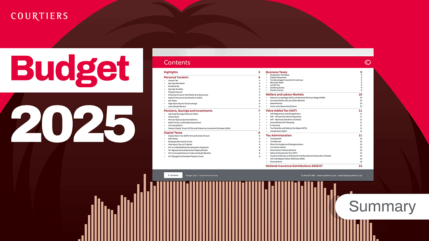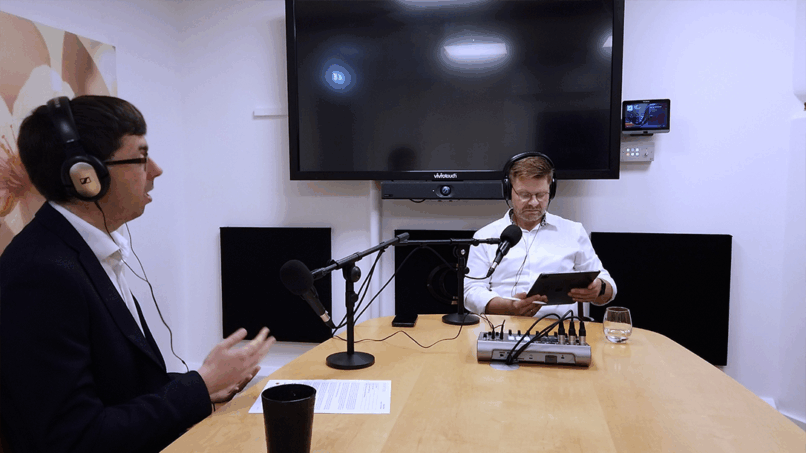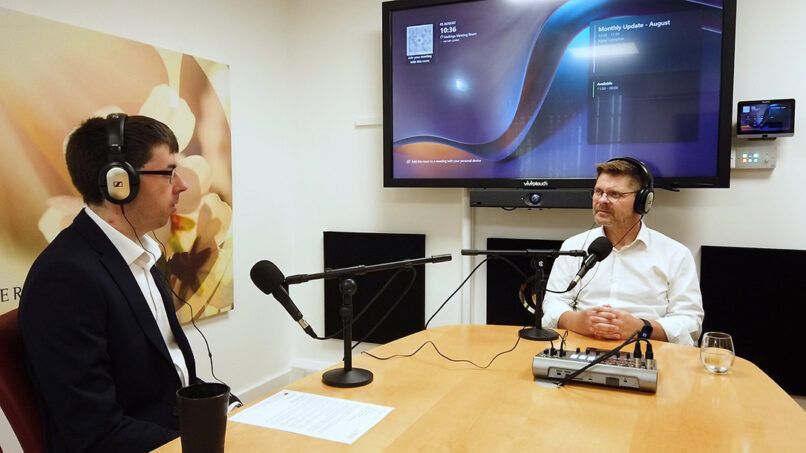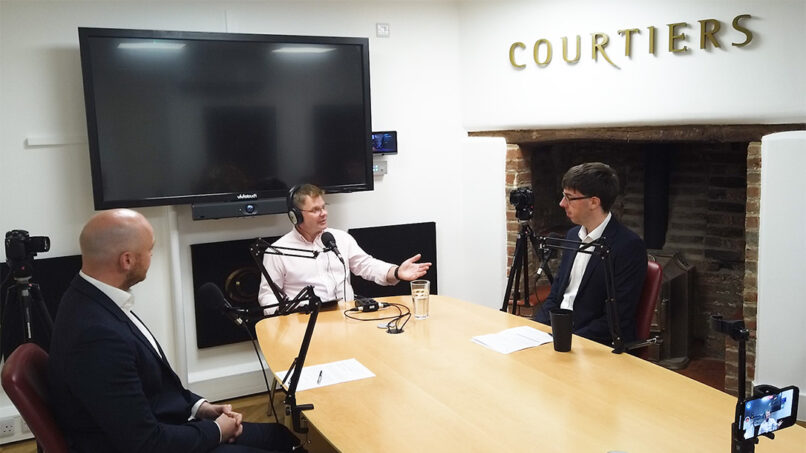Courtiers’ entire fund range generated positive returns in the third quarter of 2025, as most global markets appreciated despite ever-present macroeconomic and geopolitical concerns. The Cautious Risk Fund, Balanced Risk Fund, and Growth Fund returned +3.53%, +5.11%, and +6.68%, respectively. The Global (ex-UK) Equity Income Fund had a stellar quarter returning +9.67%, driven predominantly by smaller companies globally. The UK Equity Income Fund and Ethical Value Equity Fund rose +2.80% and +5.26%, respectively, while the Investment Grade Bond fund returned +0.77%.
The FTSE 100, the UK’s index of its 100 largest companies, was the largest contributor to returns in the Multi-Asset funds this quarter, continuing its impressive year. It broke through 9,000 in July and went on to reach 9,350 at the end of the quarter. These were the highest levels the FTSE 100 has reached in its 41-year history, returning +7.51% for the quarter and +17.67% for the year. Four of the five biggest quarterly movers in the FTSE 100 were global mining stocks capitalising on rising industrial and precious metal prices, but buoyant financials, led by HSBC were also a significant driver of returns.
Full round-up of this Quarter’s market performance
In a reversal of last quarter, domestically focused smaller companies, as measured by the FTSE 250 ex-IT and the FTSE Small-Cap ex-IT, lagged their larger counterparts returning +1.34% and -0.13%, respectively, this quarter. UK domestic stocks are more susceptible to economic conditions like persistently high inflation in the UK and rising government borrowing costs that have plagued the quarter. Inflation has stayed close to 4% and the rate at which the UK Government can borrow for 10 years (the 10-year Gilt yield) rose from 4.49% at the beginning of the quarter to 4.7% by the end. This meant UK government bonds, measured by the FTSE Gilts All Stocks index, dropped -0.62% with long-dated (over 15 years to maturity) gilts falling -2.39%. As Government borrowing rates are used as hurdle rates for investment cash flows, interest-sensitive assets fell, despite the Bank of England (BoE) cutting its Base Rate from 4.25% to 4% in the quarter. This was evident in the portfolio, with homebuilders, infrastructure, and long bonds being small detractors in the quarter.
Buoyant financials helped drive stocks higher in Europe and Japan. The Stoxx 50, representing the 50 largest European companies, rose +4.57%, and the TOPIX (Tokyo Price Index), representing the entire Japanese market, rose a remarkable +11% in the quarter. This move pushed Japan to an all-time high. While many global markets are hitting all-time highs this year, Japan has taken 34 years to surpass the level it reached in 1989 during the Japanese asset price bubble. This movement particularly benefited the Multi-Asset funds that initiated a position in the TOPIX in July.
The US continued to shake off its choppy start to the year. The S&P 500 (representing the 500 largest US companies) rose by +8.11%, bringing the year-to-date return to +14.81%. Rising government borrowing rates, which held back smaller companies in the UK, were not reflected across the world; US smaller companies, as measured by the S&P 600, rose +9.11% over the quarter. This performance, along with the acquisition of Guess (as discussed by James in the September update), meant smaller companies contributed the majority of the +9.67% return posted by the Courtiers Global (ex-UK) Fund in the quarter. The Courtiers Multi-Asset Funds have direct exposure to both these assets.
The economic recovery in Asia that benefited Japan and HSBC was also felt strongly by China, where the impact of tariffs has been less than initially feared. Chinese stocks, as measured by the MSCI China index, rose an impressive +19.75% in the quarter, driving the MSCI Emerging Market Index up +12.49%. This move, however, needs to be met with caution, as China and the US are currently in a 90-day truce regarding higher tariffs, which is set to expire on 10th November 2025. We will continue to monitor this situation closely.
Oil, as measured by Brent Crude, fell again this quarter, approaching $65 a barrel and nearly half the price it reached at the beginning of 2022. Other commodities have continued their upward march, with Gold rising another +16.4% in the quarter, and Silver and Platinum jumping +28.63% and +17%, respectively. This jump reflects buyers looking for alternative precious metals to Gold, which has become exorbitantly expensive.












